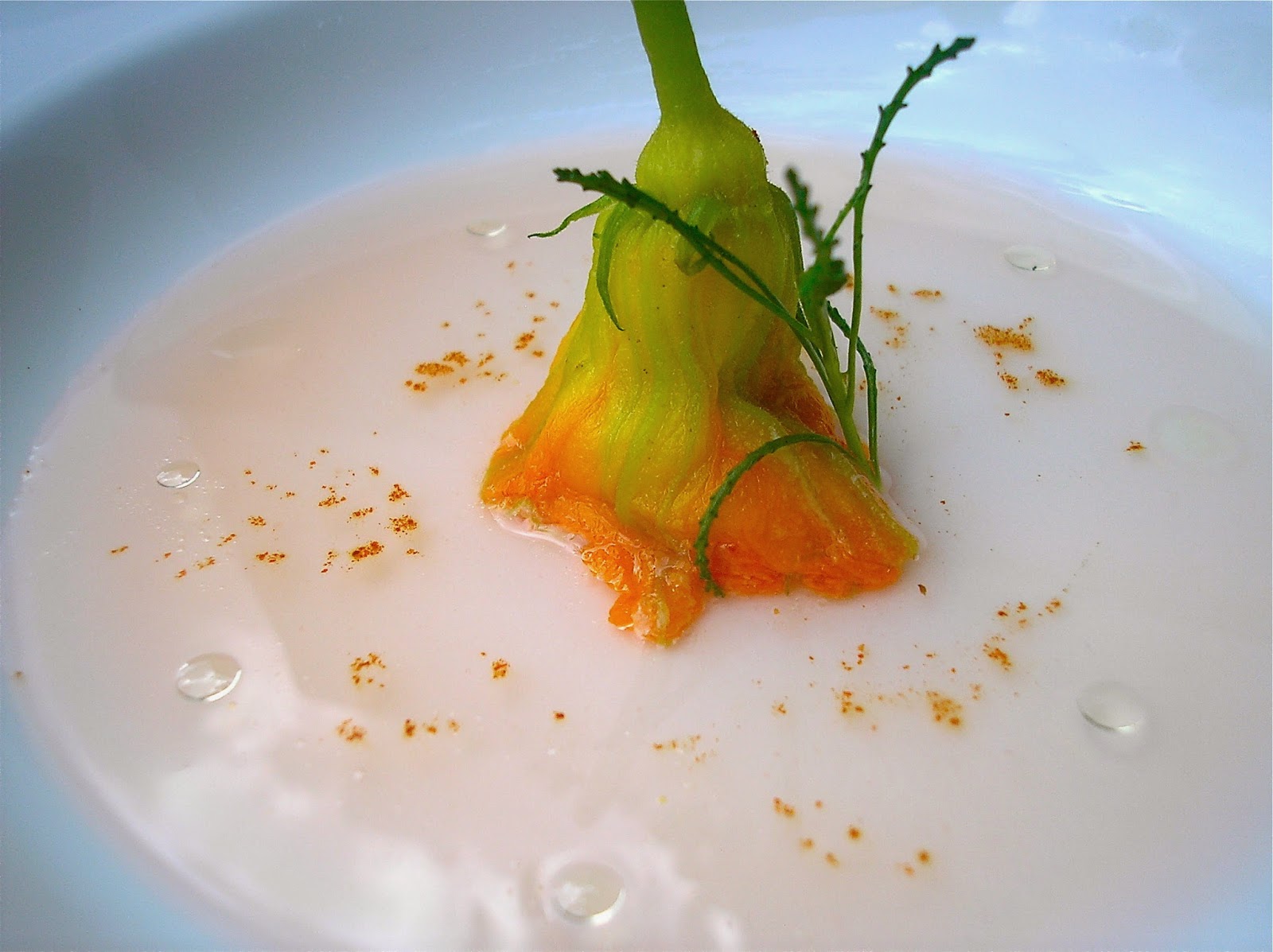 |
Oven braised Leeks with Sugar-cane raised Brown oyster mushrooms , Wild rocket , Green apple & chilli jelly and Miso & maple foam.
|
This little taster dish is a perfect way to showcase some of the mushrooms coming to harvest of late. My mycology set up is outdoors and has very little climate control so having said that the mushroom season for me is between now and late october, outside of these dates the temperatures
are just too high and not ideal for growing. I grow mainly oyster mushrooms (of all colours) and I have
some log cultured shitake that are half way too fruiting. The oysters I grow are raised on pasteurised sugar-cane mulch and are grown in bags, ziplock bags and in buckets. My method of using inoculated dowel spawn has been a success but this season over winter I will be trying grain spawn poplar wood boards and recycled paperback books to mix things up a bit. It will be interesting what the different growing mediums will have to the overall taste of the final product. I think the sugar-cane fed mushrooms have a slight grassier taste to store bought oysters which I find are quite bland in taste. Leeks are also in season right now but for this dish I used store bought leeks. The wild rocket has been
a perpetual patch in my garden for 2 years now, going to seed and the seedlings keep popping up giving me an all year round harvest of the mustard flavoured green leafy and not to mention those little
mustard flavoured flowers I often include in my dishes. This plate is packed with flavours from the sweet flavours from the braised leeks to the spice of the chilli to the earthy and grassy flavours of the cane fed oyster mushrooms and the Unami flavours of the miso in the foam. This also makes for a great little vegan option for an entree.
I started by chopping the leeks into 1 inch thick pieces and placing them into a roasting pan. I then added some vegetable stock to come to the top of the leeks but not covering them, to this
I drizzled a little sesame seed oil, seasoned and covered the pan with foil before placing into a 160 deg. c. oven and braising for an hour until soft and sweet. In a saucepan I placed chopped green apples and some green chillies with half water, half cider. This was brought to the boil and reduced to simmer for around half an hour until the apples were pulpy. I then poured the pulp into a cloth bag and allowed to filter for around 2 hours,collecting the juice. I then added the juice to a clean saucepan adding sugar, allowing 500g for every 500ml of juice and a little lemon juice. This was brought to the boil for about 10 minutes before being poured into hot sterilised jars and sealed for later use. I then sauteed the mushrooms in a little unsalted butter and seasoned them with salt and cracked pepper. Just before plating I placed some rice wine vinegar, white miso paste, maple syrup, soy sauce and soy lecithin into a tumbler and using a stick blender I formed bubbles. The excess liquid was poured off leaving just the foam which was kept in the fridge until ready to use.
To plate I spooned a little half set apple, chilli jelly in the middle of the plate arranging the braised leeks on top accompanied by the sauteed oyster mushrooms. I then spooned the foam over the dish and garnished the plate with some wild rocket and cracked black pepper.
















































